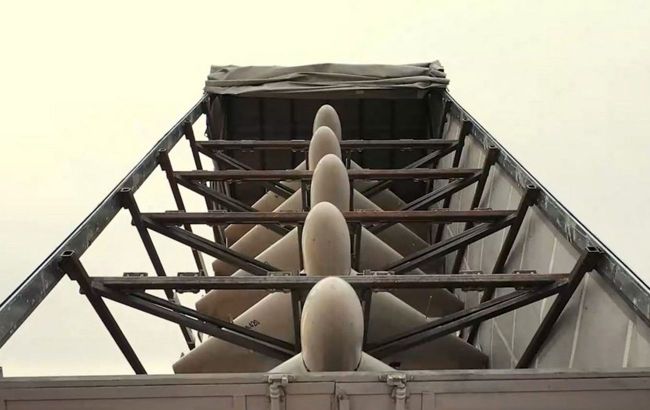Upgraded Shahed drones pose growing challenge for Ukrainian defenses - Expert

Russia's upgraded Shahed drones are becoming increasingly difficult to detect and destroy. The drones now feature new engine types, more powerful warheads, and more advanced navigation systems, stated aviation expert Kostiantyn Kryvolap in a commentary to RBC-Ukraine’s YouTube channel.
"You have to understand that 3-4 months ago, Russian drone strike effectiveness was around 2-5%, with Ukraine shooting down 95-100% of Shaheds or jamming them with electronic warfare. At one point, we even learned to send these drones in circles. They would fly loops, and then we'd redirect them back to Russia or Belarus," he said.
However, he warned that Russia will increase its capabilities.
"How exactly? Through modification and modernization of these Shaheds, by reducing their range while increasing the size of the warhead. For example, the Shaheds that now carry a 90 kg warhead, this is actually the amount of fuel they can carry that has been replaced," he said.
At the same time, the expert noted it is clear that the Russians will continue to expand the variety and combinations of warheads.
"There are already two thermobaric systems alone, slightly different ones, using different gases and aerosols. So the Shaheds will come in many variations. It's convenient to have a technological platform in the form of this airframe, and then just stuff it with whatever you want," he explained.
Kryvolap said Russia has started equipping Shaheds with gas turbine engines because the previous models lacked the power needed for higher speeds.
According to him, it is likely that the Kupol plant in Izhevsk has already launched the first batches of such drones, which will allow them to fly faster and at varying altitudes.
Protection of Shaheds against electronic warfare
"If I’m not mistaken, the first Shaheds had just 2 or 4 of the simplest CRP antennas, and they were quite sensitive to electronic warfare (EW)," the expert noted.
Kryvolap explained that the Russians have been gradually improving the Shaheds' navigation systems: first increasing the number of antennas to eight, then twelve, and now, according to him, there are even drones with sixteen antennas.
"These include the Russian Kometa-M and Chinese disc-shaped CRP antennas that enhance connectivity. So if a Shahed starts being jammed, there are now algorithms that process that interference and switch the system to alternate communication channels. Where there used to be 2–4 channels, now there are 16," Kryvolap emphasized.
According to the expert, this significantly reduces the effectiveness of electronic warfare against them.
"And anything that's been lost locationally, those are simple Geran drones. They look like Shaheds in outline, but that foam material doesn't come close to Shahed," he concluded.
Shahed drone attack on May 23
During the night of May 23, Russian forces launched drones toward Ukraine from several directions. Ukrainian air defense systems worked overnight to repel the attack.
It is known that Russian drones reached even the western regions of Ukraine. In particular, enemy drones struck railway infrastructure in the Chernivtsi region. The Ivano-Frankivsk region was also targeted.
In the Kolomyia district, buildings and vehicles sustained damage.
Additionally, the Poltava region experienced a massive drone attack overnight. A direct hit and falling debris destroyed a building belonging to a local enterprise in the Kremenchuk community.

